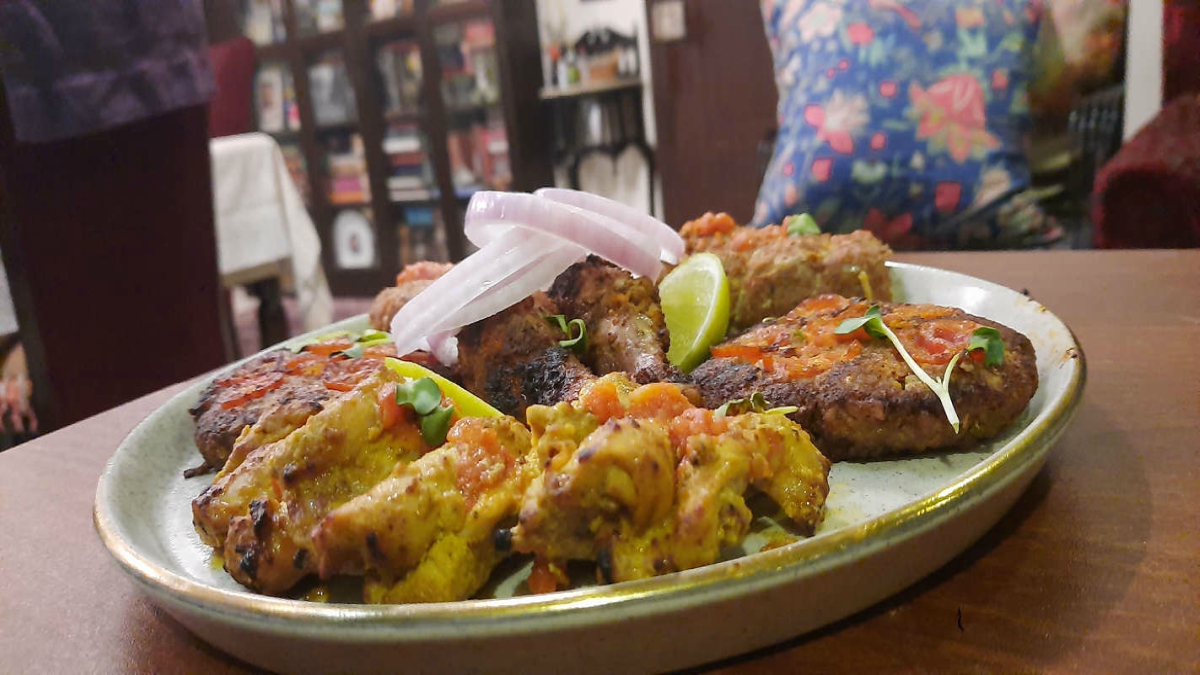


Many moons ago, I had attended a kabab workshop—a brainwave of the brilliant hotelier, Major (Retd.) Habib Rehman—at the Maurya, where chefs from ITC hotels across the country showcased 101 kababs, originating from Kashmir to Thanjavur. I also remember meeting the maestro M.F. Husain, who shared his fondness for the chapli kabab, whose flat shape gave birth to the story that the mutton mince had been flattened by a chappal, which explains the name of this delicacy from Khyber Pakhtunwa!
Numbers have been the least of India’s problems, so it is hardly surprising that there’s no part of the country that doesn’t have its unique selection of kababs or tikkas—these could be cooked in the tandoor, grilled on charcoal fires, fried in a degh, or even steamed. In a sense, kababs are like Chinese dim sum—you may have as many varieties as your imagination allows you to. It is this variety that Punjab Grill’s Kabab Di Kahaniyan celebrates across its outlets in Delhi-NCR. There couldn’t have been a heartier way to usher in the resumption of the restaurant business.
I got my kababs home-delivered and I am happy to report they were juicy and hot. I was also intrigued by the historical references attached with the names of some of the kababs. By linking the luscious Dora Kababs with Karachi’s Burnes Road, the Pakistani city’s food street since 1940, Chef Sareen Madhiya inspired me to do some fact checking. The road was named, I learned, after Dr James Burnes, a Scottish surgeon and spy who left behind two interesting travelogues on Sind and Kutch. Since Pakistan’s independence, it has been known as Mohammad Bin Qasim Road, but people still call it Burnes Road.
I have always been a fan of Dil Pasand’s Shahi Dora Kabab at Azad Market, Sadar Bazar, so I was not very happy about the association of this delicacy with Karachi’s food street, and I must add that the Chargha (the Pushto word for chicken) is a delicacy from Lahore, and not Karachi (as mentioned in the menu)—it is a whole chicken that is richly marinated for up to eight hours, and then steamed and deep-fried. Notwithstanding my quibbles about their geographical origins, I must I was pretty much impressed by both, and would recommend them highly.
My attention was also drawn to the Chicken Haldighati, which used to be my favourite at Colonel’s Kababz. It owes its name because of the obvious substantial presence of haldi (turmeric) on the kababs, but it has been thoughtfully dedicated to the Battle of Haldighati, which has been synonymous with the valour of Rana Pratap. It’s another dish I would recommend wholeheartedly. And yes, the Chapli Kababs lived up to their formidable reputation—by embellishing them with baby tomato halves, the chef ensured he added another dimension of taste and texture. The nip in the evening air quite palpably signifies the start of the kabab season.